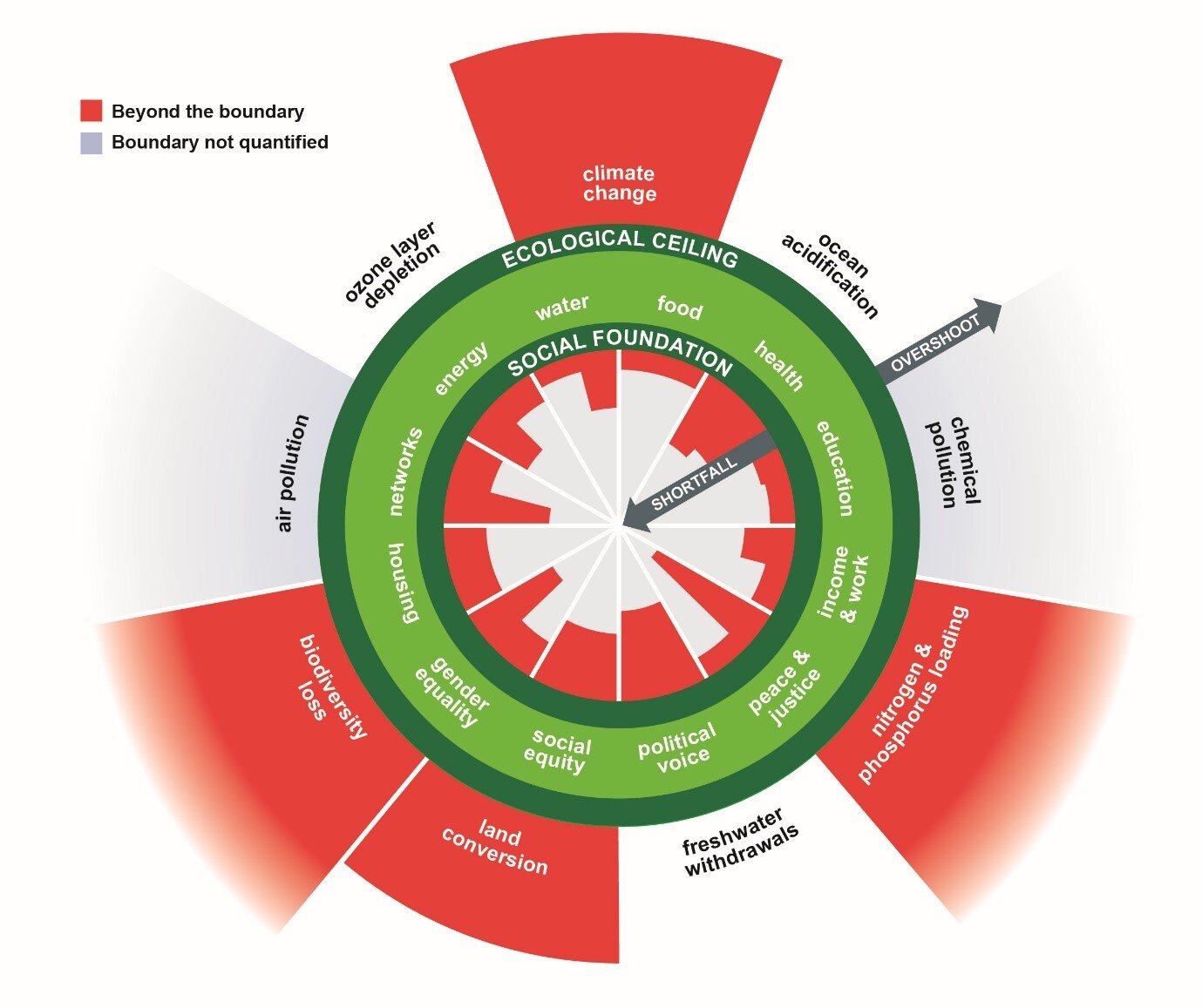Doughnut economics
I was recently reading David Attenborough’s excellent book “A Life on Our Planet” where he sets out the significant biodiversity loss in his lifetime but also some of the potential solutions to turn this around. He also references ‘doughnut economics’ (see below) as a way of understanding our current situation in a visual form.
It is clear that agriculture, as it is currently practiced, is the leading cause of ecological over-shoot. As a result it is similarly clear that agriculture must also be a major part of the solution
Attenborough references Kate Raworth’s ‘Doughnut economics’ which encompasses a visual framework for sustainable development. It combines the concept of planetary boundaries with the complementary concept of social boundaries.
The centre hole of the model depicts the proportion of people that lack access to life's essentials (healthcare, education, equity and so on) while the outer layer represents the ecological ceilings (planetary boundaries) that life depends on and must not be overshot.
Reference: https://commons.wikimedia.org/w/index.php?curid=75695170
The 'doughnut' economy is based on the premise that "Humanity’s 21st century challenge is to meet the needs of all within the means of the planet. In other words, to ensure that no one falls short on life’s essentials (from food and housing to healthcare and political voice), while ensuring that collectively we do not overshoot our pressure on Earth’s life-supporting systems, on which we fundamentally depend – such as a stable climate, fertile soils, and a protective ozone layer.”
It is generally considered that humanity has overshot the ecological boundaries in four key areas (and some uncertainty about a couple of others): -
· Climate change — the human-caused emissions of greenhouse gasses such as carbon dioxide and methane trap heat in the atmosphere, changing the Earth’s climate.
· Nitrogen and phosphorus loading — inefficient or excessive use of fertilizer leads to the fertilizer running off to water bodies, where they cause algae blooms which kills underwater life.
· Land conversion — converting land for economic activity (such as creating roads and farmland) damages or removes the habitat for wildlife, removes carbon sinks and disrupts natural cycles.
· Biodiversity loss — the loss of a number and variety of species. This makes ecosystems more vulnerable and may lower their capacity for sustaining life and providing ecosystem services.
Without doubt agriculture is the leading (and virtually exclusive) cause for the last three (fertiliser use, land conversion, and biodiversity loss) and is a very significant driver (likely between 30% and 60%) of climate change. Clearly the current agriculture model (industrial monocrops and intensive animal production) is the culprit and being ‘sustainable’ (i.e., maintaining a system that already exceeds ecological boundaries) is not the answer. We need to change this dramatically.
However, there are well developed solutions in the regenerative agriculture space that can, without artificial fertilisers, actually draw down carbon dioxide, increase bio-diversity (by increasing diversity of species and moving away from monocultures with their attendant herbicide and insecticide applications) while increasing food production on less land which would enable some existing farmland to be returned to its pre-agriculture, bio-diverse state.
We now need to ensure wide and rapid adoption of these practices across our agriculture systems. The key question is not whether we can but more a case of whether we have the will to do so and if we do whether we will change fast enough.
This will not be a ‘top down’ approach (though government can certainly help in lots of areas). Fundamentally it requires the end consumer to demand that their food be produced in a certain way – organic versus conventional, grass fed versus grain fed, etc.
If the demand for regeneratively produced food exceeds supply then more farmers will convert. (The reverse also happens). So it comes down to what you, personally, choose to do. Is your next food purchase going to support regenerative farmers?
